Have you ever wanted to bring a little bit of nature into your home? Well, what better way than by setting up a turtle tank? Turtles are fascinating creatures that can make great pets, and having the right plants in their aquariums will not only give them a more natural environment but also provide important benefits. In this article, we’ll explore what plants are good for turtle tanks so you can create an amazing habitat for your pet.
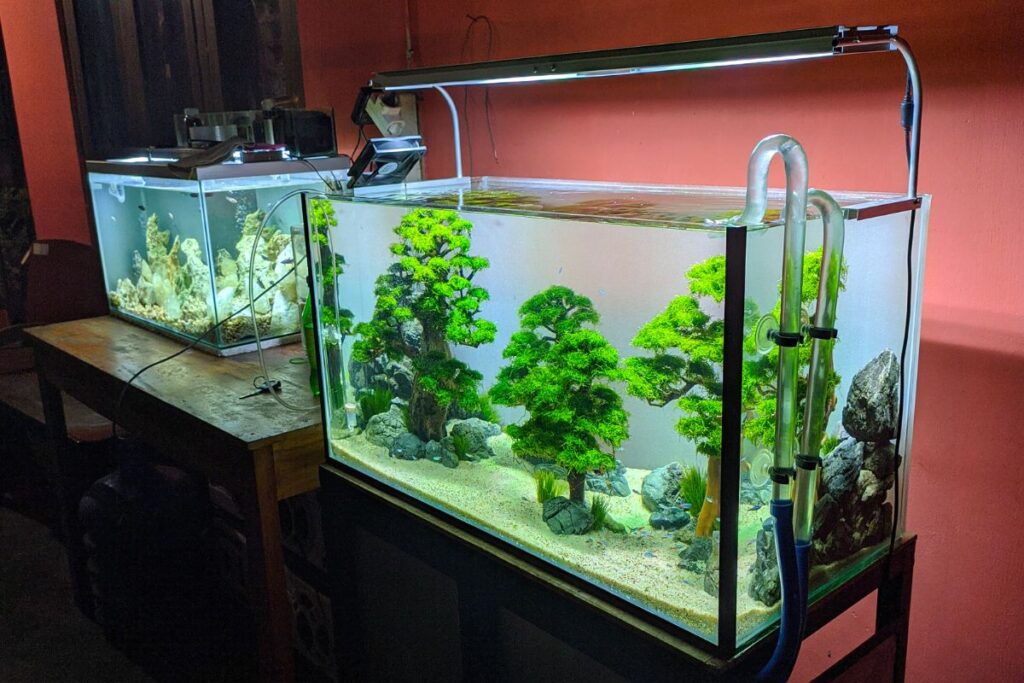
Turtles need plenty of places to hide and bask, as well as nutritious food sources. Luckily, there’s no shortage of aquatic plants that provide all these things. The best part is many affordable options exist so creating a beautiful turtle tank doesn’t have to break the bank. From fast-growing varieties to slow growers and from floating species to rooted ones—there’s something suitable for everyone’s needs!
So if you’re looking to spruce up your turtle tank with some greenery, read on to find out which plants could be perfect for your new setup! We promise it won’t take long before you’ve created an incredible living space for your scaly friend.
Contents
Tips On Choosing A Plant For The Turtle Tank
Finding the right turtle plants for your tank can be daunting. After all, you want to make sure your reptiles are comfortable and safe in their habitat. But don’t worry! I’m here to give you some tips on choosing a plant for your turtle tank.
Live aquatic plants provide many benefits for both turtles and aquariums. Live plants offer shelter from predators, help to reduce stress levels and add natural beauty to your tank’s environment. They also aid with the oxygenation of the water by taking in carbon dioxide and releasing oxygen into the water column. Plus, live plants act as a natural filtration system for ammonia-rich waste produced by turtles or fish living in the same tank.
When considering which types of plants are best suited for your turtle’s tank, look for species that grow very slowly or remain relatively small over time so they won’t overtake the entire space. Varieties like Java Fern, Anubias Barteri, Amazon Sword Plant, Dwarf Sagittaria Subulata Grass, Water Wisteria (Hygrophila difformis), Aponogeton Crispus Bulb Plant & Hornwort will do well with basics such as gravel substrate and LED lighting—no fancy equipment is needed! Just remember to keep an eye out for any signs of excessive algae growth since this could indicate too much light exposure or insufficient circulation within the tank.
Now that you’ve got some helpful advice about finding suitable turtle plants for your tank it’s time to get shopping! With these tips under your belt, you’ll have no trouble picking out just the right type of greenery to spruce up your reptile’s home sweet home.
What Plants Are Good For Turtle Tanks?
1. Java Moss
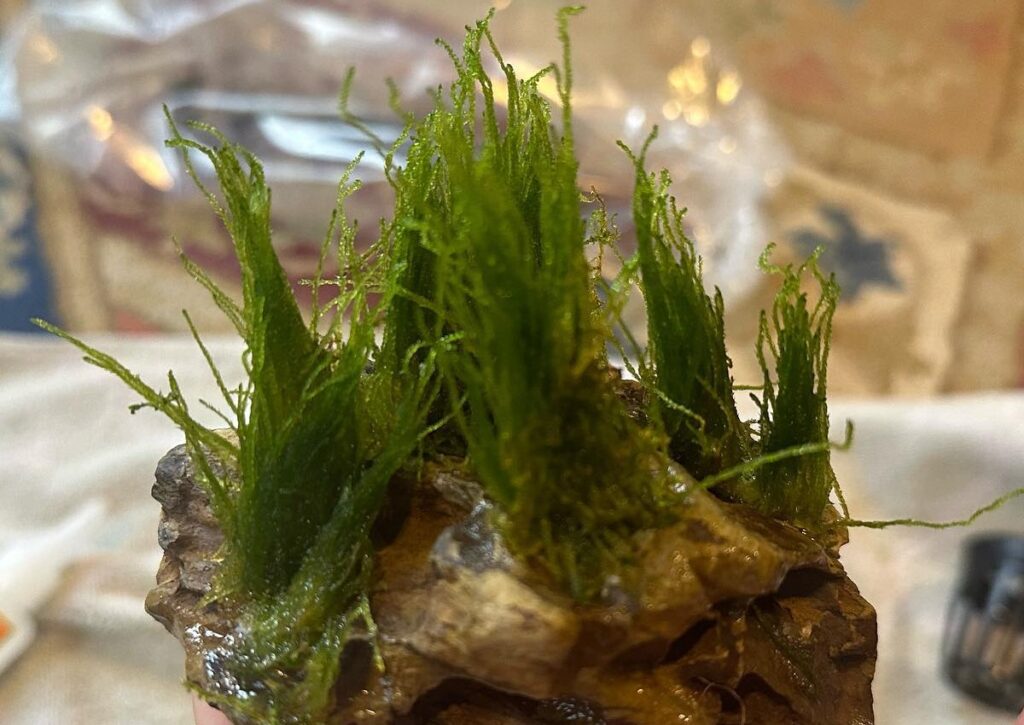
Moving on from the previous section, let’s look at one of the most popular plants for turtle tanks—Java Moss! This moss is a great choice as it is low-maintenance and easy to care for. It grows quickly and can withstand even high levels of humidity. Plus, it provides a natural hiding spot for turtles so they feel secure.
Java moss comes in different types, including Christmas Moss and Weeping Moss. They have similar growth characteristics but slightly different shapes and textures. You may want to experiment with various types to find out which best suits your turtle tank setup.
In terms of java moss care, all you need to do is make sure that there’s enough light and water in the tank. Additionally, trimming or pruning can help keep its shape looking neat and attractive. Keep an eye out for any signs of disease such as yellowing leaves or moldy patches as this could indicate overgrowth or poor water quality respectively.
Whether you choose Christmas Moss or Weeping Moss—both are ideal choices when creating a habitat for your pet turtle! By providing plenty of food, clean water, and regular maintenance, these two varieties of java moss will thrive in their environment while also giving your pet some much-needed cover and security.
2. Hornwort
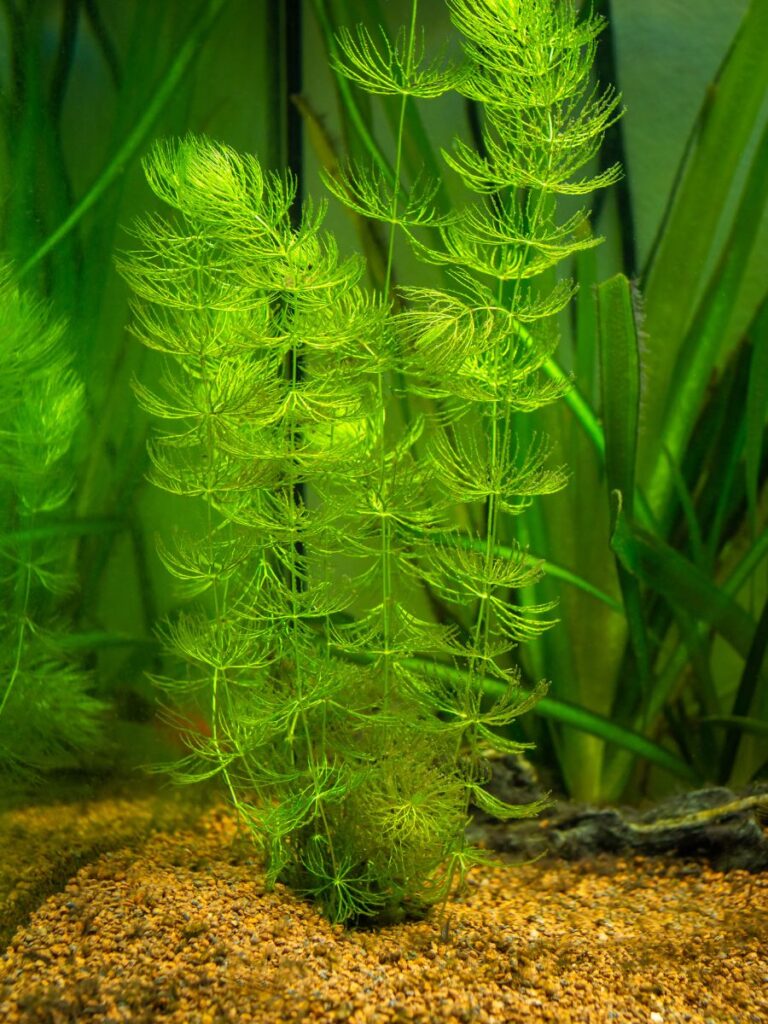
I’m sure you’ve already heard of Hornwort. It’s an aquatic plant that is beloved by many turtle owners due to its great attributes:
- It provides a natural environment for your turtles, helping them feel safe and secure in their habitat.
- It helps oxygen levels stay high in the tank, ensuring optimal health and well-being for your turtles.
- It can be easily found at most pet stores or online retailers, making it very accessible to everyone who wants to incorporate it into their turtle tanks.
Hornwort offers so many benefits for turtle owners and their pets alike! Not only does it create a beautiful aesthetic for the tank, but it also has practical uses as well. Its presence in the water helps keep oxygen levels higher which leads to better overall health for your turtles—something we all want for our beloved friends! Additionally, this type of plant acts as a shelter from predators—providing safety and security for your turtles in their own homes.
When selecting hornwort for your aquarium there are some key things to look out for such as size (make sure it’s not too big) and color (choose one with bright green hues). Also, make sure to trim any dead leaves or stems before adding them to the water—this will help ensure healthy growth over time. With proper care, hornwort can last up to several months in your tank—making it an excellent choice when looking to add additional elements of nature into your turtle’s living space.
So if you’re considering adding a bit of greenery to your turtle tank then definitely consider Hornwort as a top contender! This aquatic plant offers numerous advantages while also creating a serene atmosphere that both you and your pet will enjoy.
3. Anubias Barteri
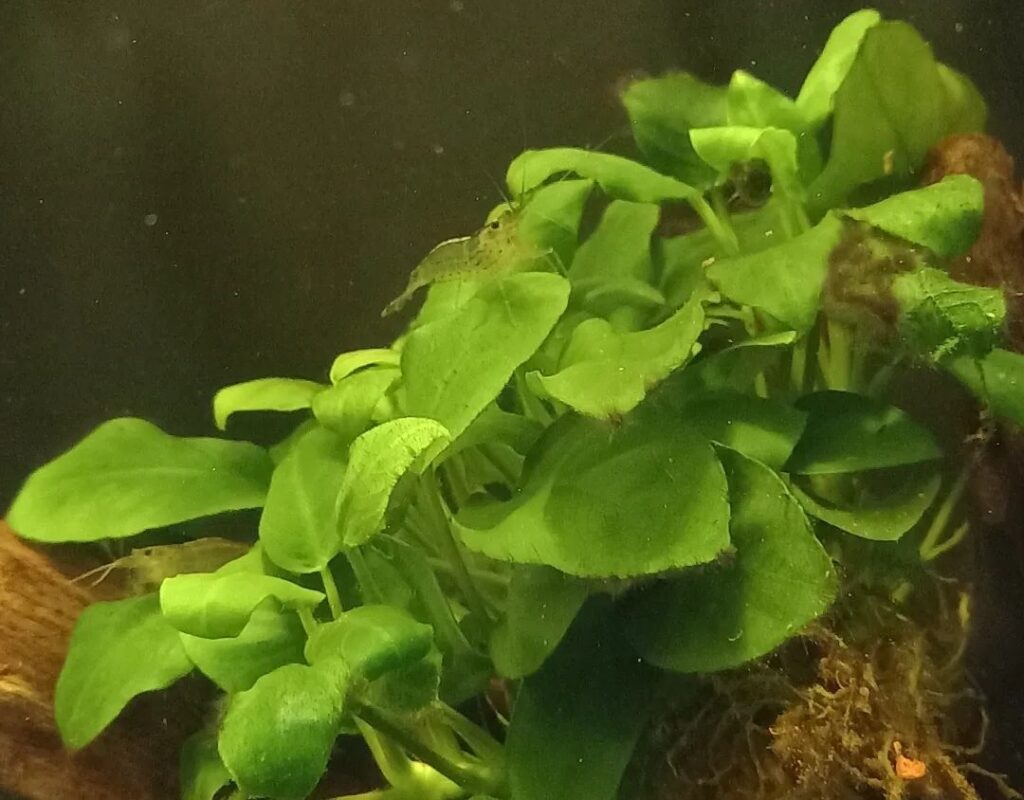
Anubias barteri is a great plant for turtle tanks. It’s an easy-care aquarium plant that grows well in most conditions, providing turtles with natural hiding places and shade from the light. Anubias barteri has thick stems and leathery leaves which are perfect for giving turtles something to climb on or hide under when they need some privacy. Plus, its slow growth means it won’t take over the tank like other plants can!
The best part about this type of aquatic plant is that it doesn’t require any special care to stay healthy. All you need to do is keep the water clean and make sure there’s plenty of oxygen circulating within the tank. You might also want to add some extra fertilizer if your turtle doesn’t have enough food sources available. And don’t forget—regular trimming will help to keep your Anubias barteri looking neat and tidy!
So why not give it a try? Anubias barteri is a great choice for adding both beauty and practicality to your turtle tank. Not only does it look lovely—but it helps create a healthier environment for your pet too!
4. Java Fern
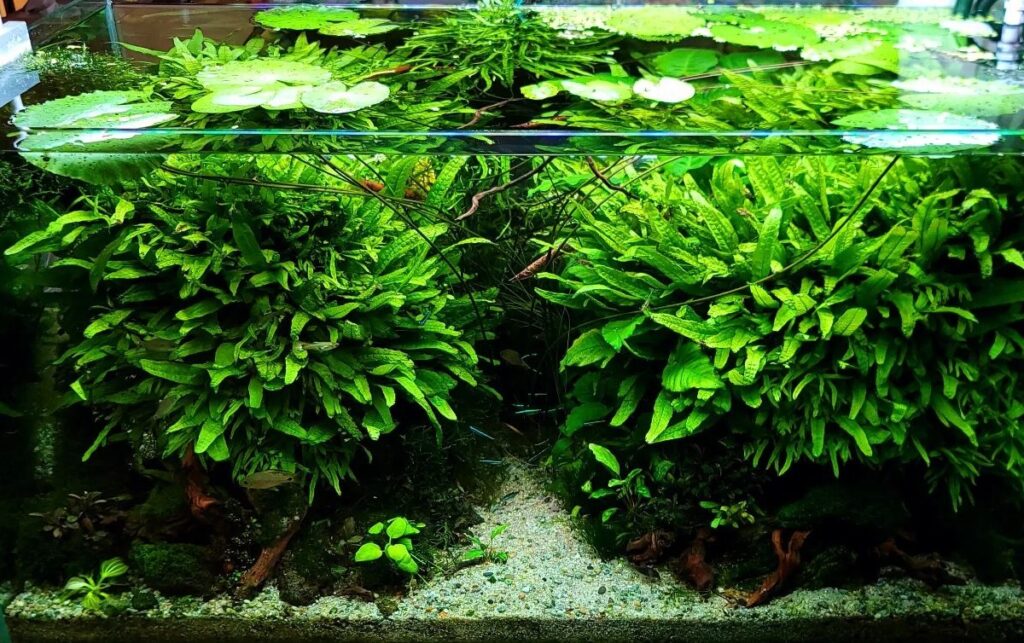
Moving on from Anubias barteri, Java Fern is also a wonderful aquatic plant choice for turtle tanks. This green and vibrant species can bring much-needed life to your tank while providing numerous benefits for its inhabitants. It’s an easy-to-care-for live plant that will help create a healthy environment in the habitat. Here are some of the advantages of using Java Fern:
- Adds beauty to the tank: Not only does it look aesthetically pleasing, but it’s also great at helping keep decorations in place due to its root structure.
- Beneficial filtration process: The leaves absorb toxins, heavy metals, nitrates, phosphates as well as other substances which provides better water quality overall.
- Enhances oxygen levels: With all those beneficial processes mentioned above comes higher oxygen levels which help turtles thrive even more so in their habitat.
In addition to its many useful features, this type of fern requires minimal care such as low light requirements, and no fertilization needed whatsoever. Although these plants prefer cooler waters than what most tropical fish require, they’re still relatively hardy and make a great option for experienced or novice aquarists alike!
5. Amazon Sword Plant

The Amazon Sword Plant is a great addition to turtle tanks. It’s a hardy plant that can withstand the conditions of a turtle tank and it looks beautiful too! The broad leaves are attractive and provide an ideal habitat for turtles to hide among. Plus, the Amazon Sword Plant helps keep the water clean by providing oxygen and absorbing nutrients from the turtle tank environment.
When getting an Amazon Sword Plant for your turtle tank, you’ll want to make sure you get one that is healthy and well cared for. Look for signs of disease or damage before purchasing one. You should also opt for plants grown in aquariums as they’re more likely to survive than those grown elsewhere. When planting your Amazon Sword Plant, be sure to put it in the substrate with gravel on top so that its roots have something to hold onto while growing in the turtle tank environment.
You’ll want to care for your Amazon Sword Plant properly so that it stays healthy and produces plenty of oxygen for your turtles. Make sure you give it enough light (10-12 hours per day) and fertilize regularly using liquid fertilizer every two weeks during the summer months. Trim any dead or dying parts of the plant if needed and change 20% of the water each week in order to keep everything running smoothly in your turtle tank amazon setup. With proper care, this sword plant aquarium will remain vibrant and strong—giving life to your aquatic world!
6. Anacharis

Moving on from the Amazon Sword Plant, let’s talk about Anacharis. This aquatic plant is a perfect choice to add to your turtle tank. Not only does it look great and create an attractive backdrop for your aquarium but it also provides some essential benefits that are crucial in keeping your turtles healthy.
First of all, Anacharis is very easy to maintain as compared to other aquarium plants. It can be planted both above or below the water surface which makes it suitable for any type of turtle tank setup. Secondly, this plant grows quickly and rapidly multiplies itself so you don’t need to worry about replacing it frequently. Plus, its roots do not require frequent trimming like many other plants do—making it convenient for busy pet owners who want low-maintenance options!
Thirdly, Anacharis helps keep the water clean by absorbing toxins such as ammonia and nitrates present in the water. As a result, it decreases the amount of work needed when cleaning out the tank every few weeks. Lastly, this submerged-plant acts as a natural hiding place for small fish and invertebrates living in your turtle tank—providing them with safety and security while they go about their day-to-day lives.
Anacharis:
- Easy to maintain
- Grows quickly
- Absorbs toxins
- Natural hiding spot
- Low maintenance
7. Moneywort
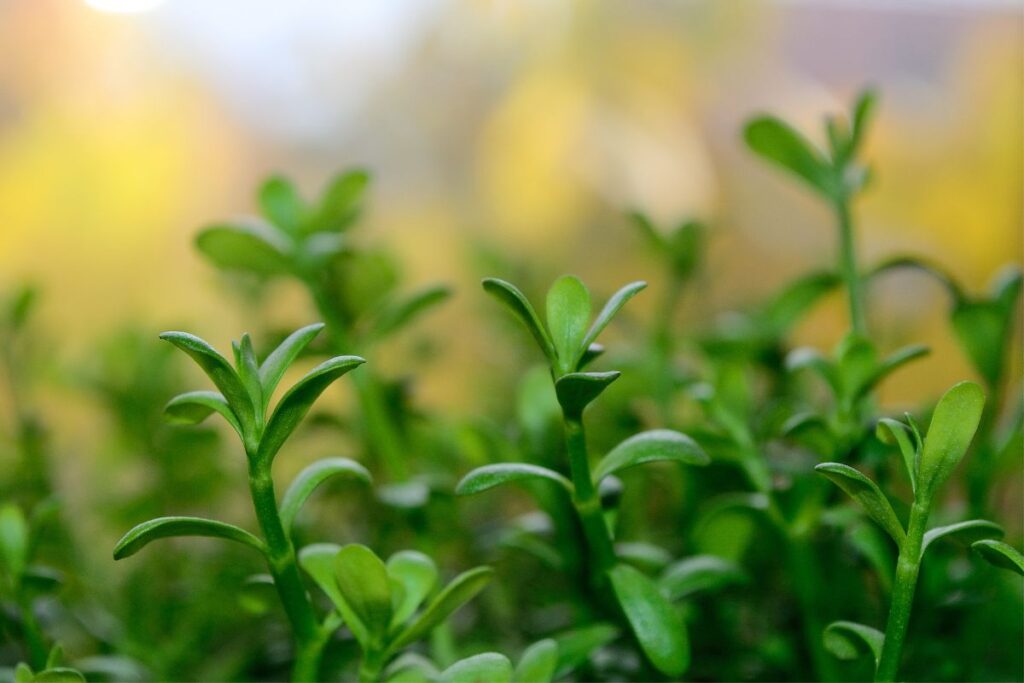
I’m sure you’ve heard of moneywort as a great addition to turtle tanks, but do you know how good it really is? Moneywort is an aquatic plant that makes for great aesthetic appeal and provides many benefits. It’s also very easy to care for and propagate, making it perfect for those who don’t have the time or resources to maintain complicated aquarium plants.
Moneywort grows in both submerged and emersed forms, so it can be used in either type of water tank. The leaves are long and thin with little round bumps along the edges; they come in various shades of green depending on the amount of light your tank receives. This gives your tank an interesting variety of colors and textures. As an added bonus, moneywort helps keep your water clean by absorbing excess nutrients from the water column which prevents algae growth.
Moneywort propagation is quite simple—just cut off some stems near the base and replant them into your tank! You may need to trim them occasionally if they become too large or start invading other parts of the tank, but otherwise, this plant requires minimal maintenance. All in all, moneywort is a fantastic choice for any turtle tank due to its ease of care, beautiful aesthetics, and ability to keep your water clean.
Best Floating Plants For Turtle Tank
Floating plants come in all shapes, sizes and colors—from bright green frogbit to delicate pink fairy moss. These plants can be used as either solitary inhabitants or combined with other aquatic species to create an eye-catching display. No matter what type of aquarium you have, there is a suitable floating plant available for it. Plus, these easy-to-care-for beauties require minimal maintenance so they’re great for beginners!
In addition to adding aesthetic appeal to your tank, floating plants also provide many practical benefits such as providing shelter for small fish and shrimp, controlling algae growth and oxygenating the water. With so many advantages, it’s no wonder why these versatile aquatic wonders are becoming increasingly popular among aquarists around the world! Read on to discover our top picks for the three best floating plants for a turtle tank—each chosen for its unique characteristics and suitability for turtles.
1. Water Lettuce
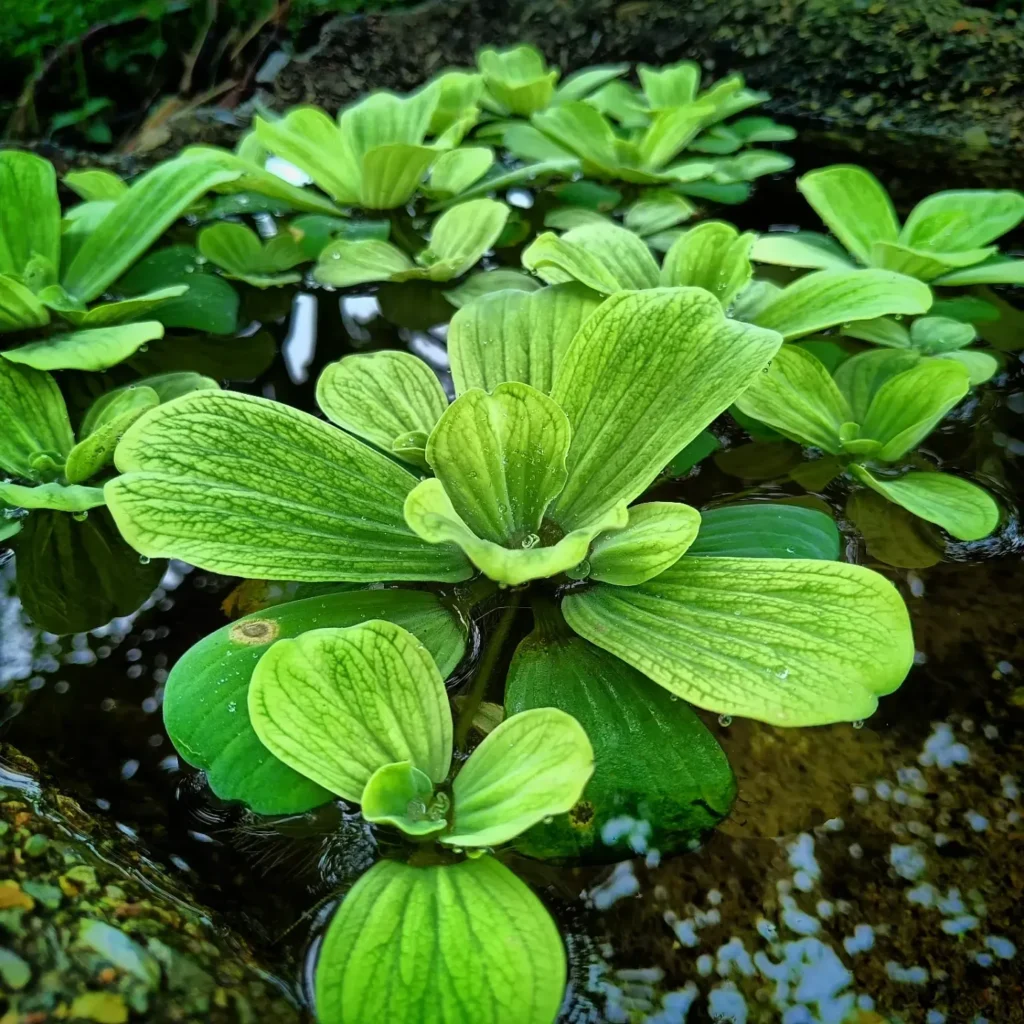
If you’re looking for a great floating plant for your turtle tank, water lettuce is definitely worth considering. It’s one of the most popular aquarium plants and provides an attractive addition to any aquatic environment. Not only that, but it also helps create shade and hiding spots while simultaneously helping to reduce stress levels in turtles.
Water lettuce can be easily grown indoors or outdoors, as long as there’s enough light and warmth available. Plus, they don’t require much maintenance since they grow quickly and spread easily. With its vibrant green leaves and soft texture, water lettuce adds a beautiful touch to any turtle tank! And because it requires minimal care and attention, it’s perfect for those who are just starting out with keeping aquatic plants in their home tanks. So if you’re looking for an easy-to-care-for floating plant that will add a bit of beauty to your turtle tank, look no further than water lettuce!
2. Duckweed
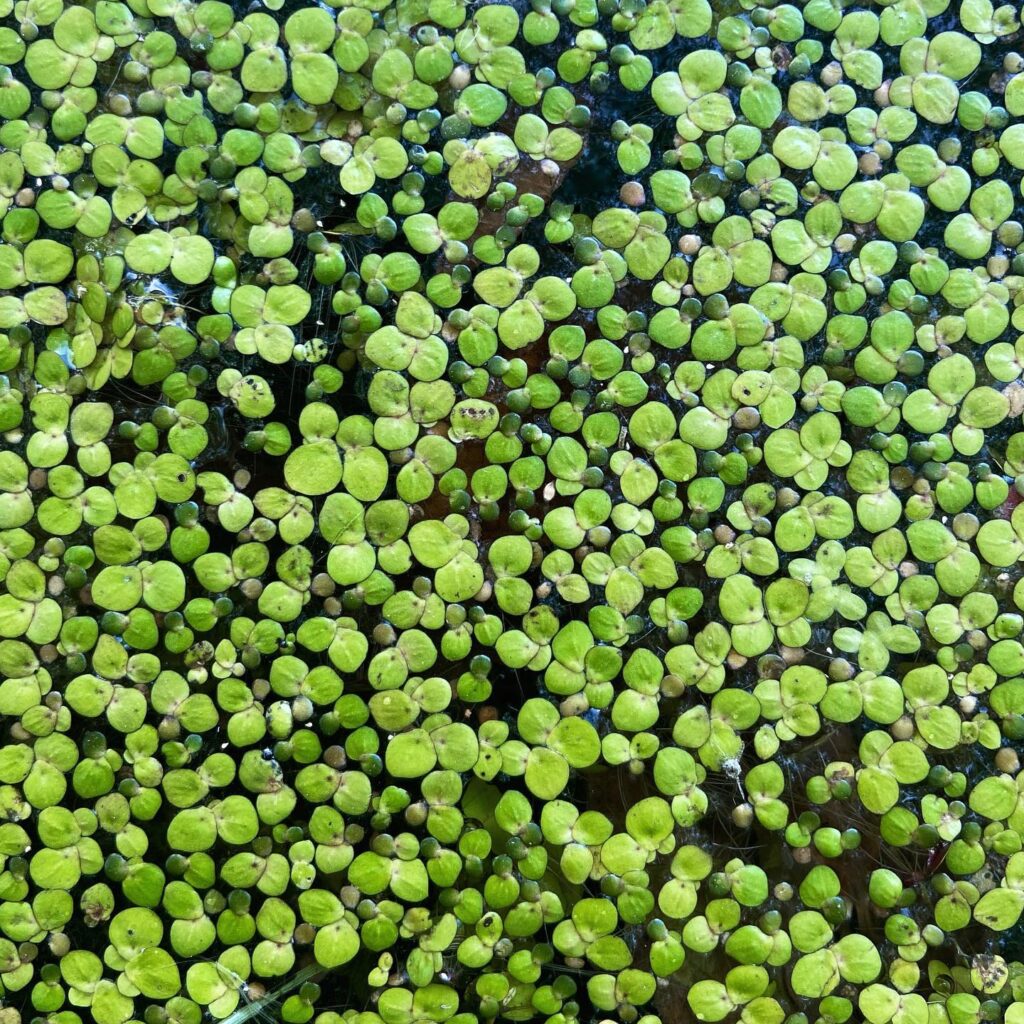
Next up in our exploration of the best floating plants for a turtle tank is duckweed. This aquatic plant is one of the smallest pond plants available, and it’s perfect for small to medium-sized tanks. Duckweed floats on top of the water’s surface and its bright green leaves look lovely in any aquarium or fishpond. Not only does this plant provide shelter for your turtles, but it also helps keep their water clean by removing toxins from the environment.
Duckweed can be purchased in most pet stores and online retailers that specialize in aquatic plants. When purchasing it, make sure you buy enough so that there are plenty of individual pieces covering the surface area of your tank or pond; otherwise, they won’t get all the benefits this plant has to offer. It’s best to start with a larger quantity rather than just buying a few small bunches – more duckweed equals better results!
If you’re looking for an easy way to add some beauty to your turtle tank while providing extra filtration and oxygenation, duckweed might be exactly what you need. Not only will it help keep their habitat healthy, but it’ll give them something fun to play around with too!
3. Amazon Frogbit
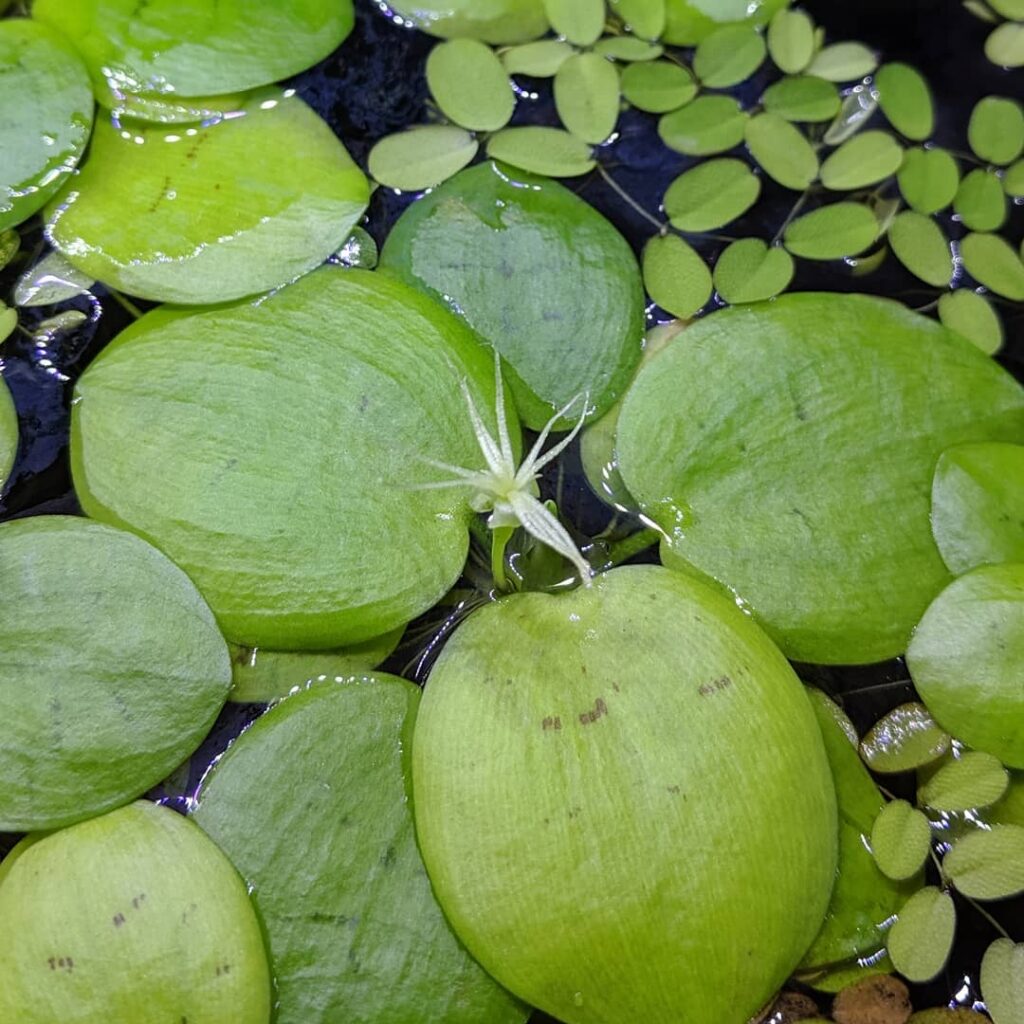
Amazon Frogbit is a popular choice for turtle tanks because of its attractive appearance and ease of care. It’s an aquatic plant that floats at the top of your turtle tank, adding beauty to any aquarium. Here are some reasons why Amazon Frogbit makes a great floating plant for your turtle aquarium:
- It’s easy to maintain – This hardy species can survive in most water conditions and flourishes with minimal attention.
- It provides shade – The leaves provide shelter from bright lights so turtles can hide away during the day if they need to cool off or take a break from swimming around their tank.
- It helps keep the water clean – As it grows, this plant absorbs nutrients like nitrates that could otherwise build up in the water, thus helping reduce levels of ammonia and other toxins which can be harmful to turtles in high concentrations.
In addition to these benefits, Amazon Frogbits also add color and texture to your turtle’s home, making them an aesthetically pleasing addition to any aquatic environment. With proper maintenance and plenty of light, this species will quickly become established as part of your pet’s ecosystem—giving you both peace of mind knowing that it’s safe while providing a beautiful backdrop for your turtle aquarium!
What Plants Are Toxic To Turtles?
Now let’s talk about what plants are toxic to turtles. Turtles need specific aquatic plants that can survive in their tank environment and won’t harm them. It is important for turtle owners to familiarize themselves with the list of aquatic-toxic plants, as well as which ones are poisonous or dangerous for your pet.
Turtle owners should avoid using any plant labeled “turtle-poisonous-plants” or “poisonous-aquatic-plants” in their tanks. These include species such as Water Hemlock, Blue Flag Iris, Delphiniums, Foxglove, Rhododendron, and Azaleas. All of these plants contain toxins that can cause severe health problems for turtles if ingested. In addition, some types of algae like Staghorn Algae may be harmful to your pet when consumed in large amounts.
Any plant you add to a turtle tank must be thoroughly researched before introducing it into the habitat. Be sure to check reviews from other turtle keepers who have used it already and ask questions at local fish stores or online forums about its safety for turtles. Additionally, make sure all live plants are free from parasites and pests before adding them to the tank so they don’t introduce any diseases into your turtle’s living space. With careful research and awareness of potential risks associated with certain aquatic plants, you’ll be able to provide safe vegetation options for your reptile friend!
Advantages Of Live Plants In Turtle Tank
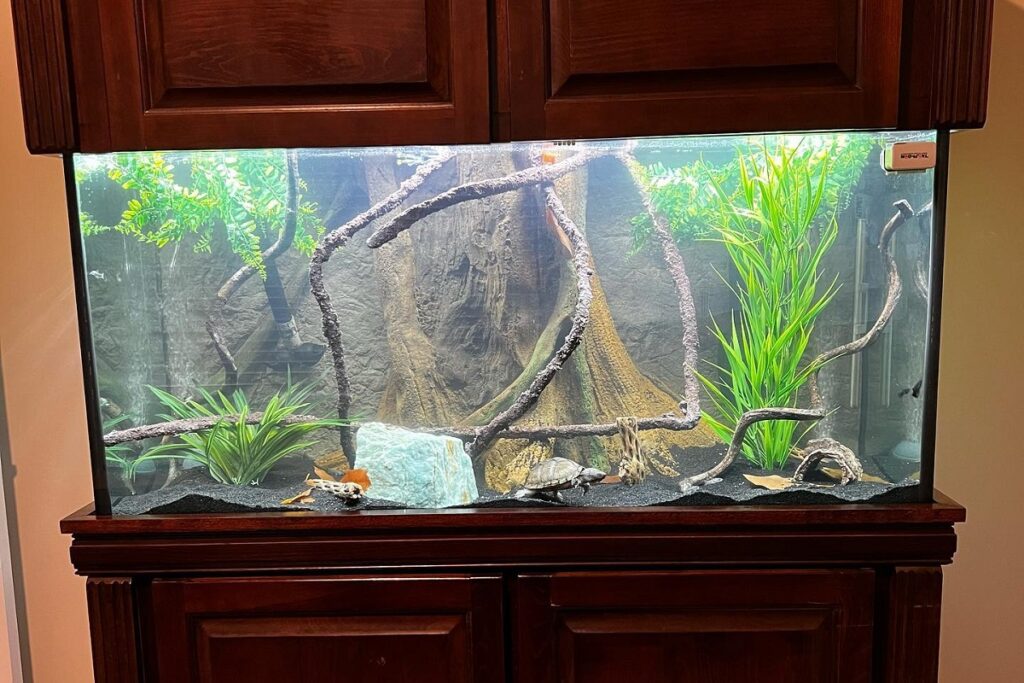
Live plants in turtle tanks are great for maintaining healthy water quality. Aquatic plants can help to keep the tank’s water clarity clear by filtering out debris and harmful toxins from the water. They also act as natural oxygenators, increasing oxygen levels in the tank which helps to reduce stress levels in your turtles.
Live plants provide a more natural environment for your turtles since they will be able to hide amongst them and feed off of their leaves and stems. Live aquatic plants allow for an aesthetically pleasing look that you won’t find with artificial plastic or silk plants; this makes it easier to create a unique design within your tank.
Having live plants in a turtle tank is beneficial not only to your pet but also to you as well! Watching your turtles interact with their environment while swimming around among the live plants is sure to be an enjoyable and relaxing experience each time you take a glance at their home.
Disadvantages Of Live Plants In Turtle Tank
Live plants can add a natural feel to your turtle tank, but there are some drawbacks as well. Firstly, root damage is something you’ll want to be aware of. Turtles love to dig and may accidentally tear up or even eat the roots of your live plants. Algae growth is also an issue for aquatic turtles. If the water isn’t sufficiently filtered and cleaned regularly, algae can quickly grow on the leaves of your plants and crowd them out.
Inadequate lighting can be another problem with live plants in turtle tanks. Many types of aquatic vegetation require a certain amount of light to thrive, which may not happen if they’re placed too far away from the source of illumination in your tank. Poor circulation is another factor that could impact the success rate when adding live plants to a turtle’s habitat; without adequate movement in the water, nutrients essential for plant life won’t reach all areas equally.
Finally, overcrowding can cause problems too; it’s best to limit how many aquarium plants you have so they don’t compete with each other for space and sunlight exposure. All these considerations should be taken into account before investing in any kind of live flora for a turtle tank—after all, we want what’s best for our beloved pets!
Conclusion
In conclusion, live plants can be a great addition to turtle tanks. They offer natural hiding places for the turtles and provide food if they are edible. Having live plants in a tank is also beneficial because it helps keep the water clean by reducing nitrates and adding oxygen. However, one must take caution when selecting their plant choices as there are some that may be toxic to turtles and not all of them will thrive with these aquatic animals. As long as you do your research on what type of plants are safe to put in the tank and how to care for them properly, then you can easily add beautiful greenery to your pet’s home!
I personally recommend Java moss, hornwort, Anubias barteri, java fern, and moneywort since they have proven to do well with turtle habitats. All five of these aquatic species require low light levels which makes them ideal for indoor setups; plus they don’t need much maintenance so you won’t have to worry about spending too much time caring for them. Plus they naturally reduce nitrate levels and add oxygen to the water—making it safer for your pets!
Overall I think that live plants can help bring life into any turtle habitat no matter what size or shape it might be! Not only do they look aesthetically pleasing but their presence provides multiple benefits such as providing sheltering spots, filtering out toxins from the water, and even offering food sources if they’re edible varieties. So why not give it a try? You just might end up loving it as I did!
